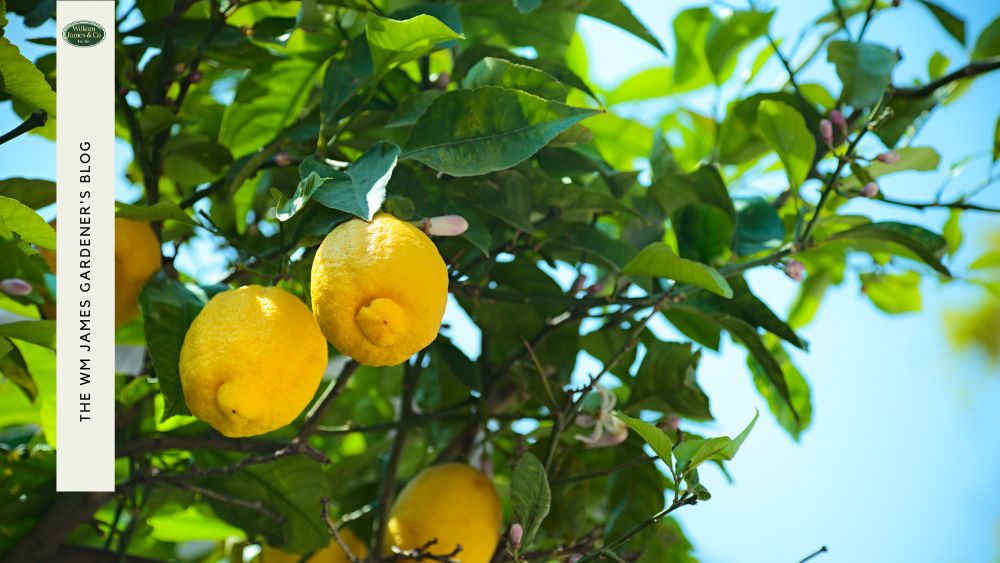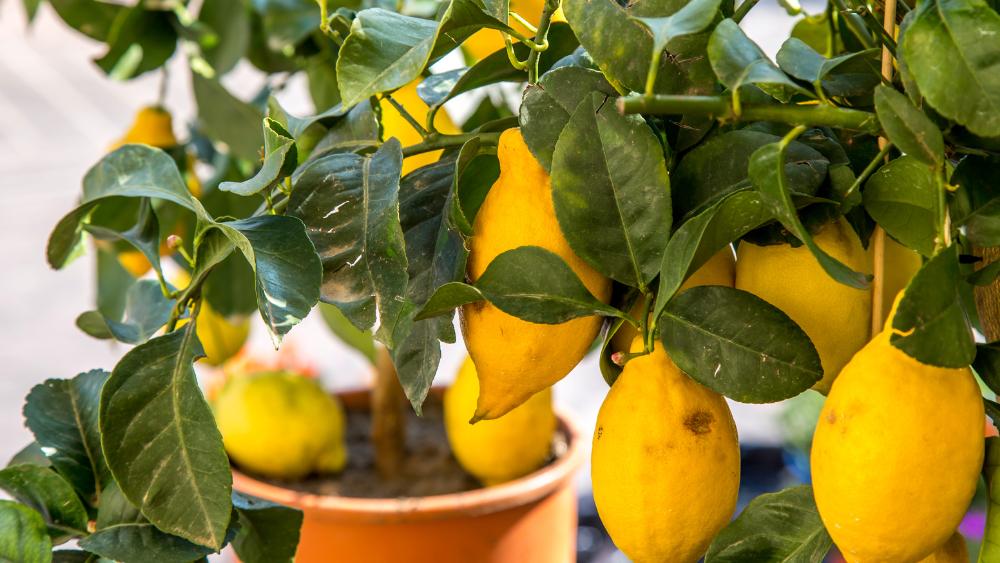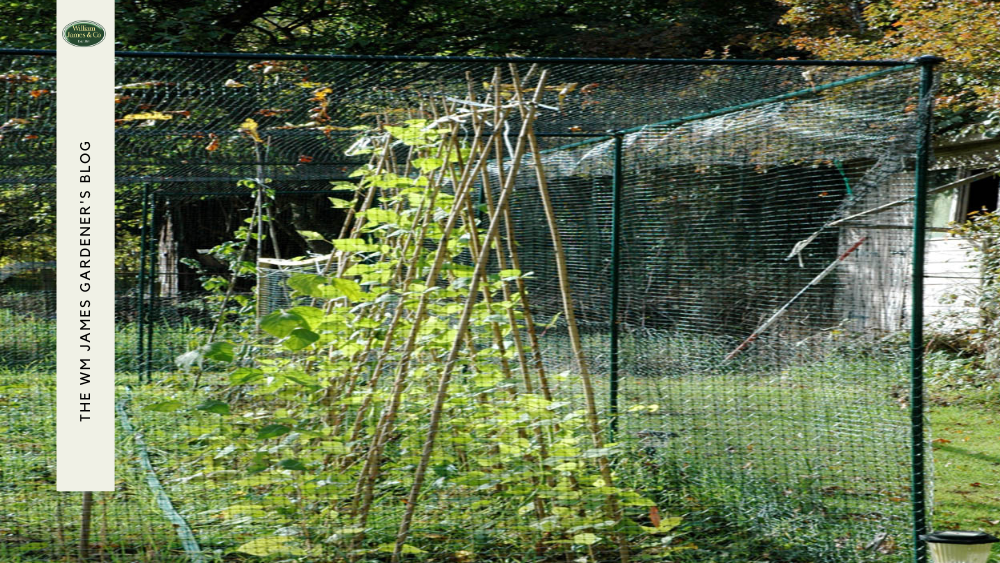We use cookies to make your experience better. To comply with the new e-Privacy directive, we need to ask for your consent to set the cookies. Learn more.
Can You Grow Lemons in the UK? WMJ Guide to Home Lemon Trees
- Admin
- WM James Gardening Blog
- 28 Aug 2023
-
442views

Growing lemon trees at home in the UK is easier than most people think. Get all the tips & tricks for a healthy, happy lemon tree from WM James. Read on for more!
Many budding gardeners love to grow their own produce, but with the UK weather, there are only so many options to choose from.
Thankfully, some exotic plants will grow in the UK, so gardeners can enjoy some more variation.
WM James are here to give you all the tips and product recommendations you'll need for planting lemons in your back garden, including growing and protection equipment.
Find some of our must-haves below, and add them to your basket today to receive free UK delivery*!
Keep reading for the sharp and juicy details!
Can You Grow Lemon Trees in the UK?
The short answer is yes: lemon trees are actually among the easiest of all the citrus trees that you can grow in the UK.
They do need a little bit of help, but with the right approach and a lot of tender loving care, your sapling can grow into a beautiful, fruit-bearing tree that will be a stunning addition to your garden.
Where Do Lemon Trees Originate?
Lemon trees have been grown around the world for centuries, and although their exact country of origin is unknown, they’re thought to have come from South-East Asia, specifically India.
Over the years, lemon trees have spread around the world, and today they’re grown everywhere from Europe to Africa.
Different Types of Lemon Trees
As lemon trees spread around the world, they diversified into different types, and today there are many varieties that produce different crops of the sour citrus fruit we know and love.
Today, there are many types of lemon trees available, some of which are more suitable for the UK climate than others.
These are some of the best lemon varieties to try growing at home in the UK:
|
Types of Lemon Trees to Grow at Home |
|
Meyer Lemon |
|
Ponderosa Lemon |
|
Genoa Lemon |
|
Variegated pink lemon |
|
Lemon4seasons (Eureka) |
How to Grow Lemons at Home
There are several methods you can use when growing lemon trees at your home in the UK. Each one has its pros and cons, so it’s worth exploring the options you have to find the best one for you.
They’ll need to be planted from around the middle of June to September.
Here are some of the best tactics to try when growing citrus fruit at home to get a beautiful plant that bears lots of yummy fruits.
Growing Lemons from a Plant
One simple way to grow a lemon tree is to buy a plant that’s already potted and help it to get larger and become a fully-fledged tree.
If you want to grow lemons from a plant, then here are some tips:
- Find the right lemon plant
- Put it in a pot that’s large enough for the plant when it grows to full size
- Feed and water your lemon regularly, and prune it to keep it the right size for your pot
- Enjoy your new lemon plant!
Growing lemons from a plant is a simple way to enjoy this delicious citrus fruit without too much hard work. Make sure you find the right plant and put it in a large enough pot to ensure that it bears tasty fruit and stays healthy.
Here are some of our handy recommendations:
Growing Lemons from Seed
Growing lemons from seeds can be harder but more worthwhile in the long run. You need to make sure that you get it right!
You’ll need a lot of patience to grow lemons from seeds, as it can take between 3 and 5 years for them to grow into a fruit-bearing plant. Still, it can be a fun activity, particularly if you’re doing it with kids.
- Select a ripe lemon, remove the seeds and wash them in cold water to remove the sugar and juice
- Get a small pot and fill it with pasteurised soil, and then plant several lemon seeds around 1cm deep
- Keep the soil moist and keep the pot in a warm, sunny, yet shaded place
- Watch your seed grow into a beautiful tree!
Growing anything from a seed requires patience and careful monitoring, and it’s never easy to get it right. However, with a little time, you could enjoy the fruits of your labour as your lemon tree blossoms.
Our Top Lemon Tree Care Tips
Once you’ve grown your lemon tree and got it to a reasonable size, you need to take care of it to keep it looking lustrous and stay strong throughout its life.
These are some of our top tips on how to look after your new lemon tree so that it grows up to be big and strong.
Watering Lemon Trees
Lemon trees need a lot less water than you might think, despite their love of heat. In the summer, you need to water them more often, around once or twice a week.
When it comes to winter, you can water your lemon trees much less, perhaps as little as once a month, or even less if it’s raining heavily.
Feeding Your Citrus Plants
As lemon trees are used to very specific conditions, you need to make sure that you feed them all year round and give them the nutrients they need.
Citrus fertiliser needs to be high in nitrates, as these will help the tree to grow and flourish. You can usually buy specially made food products for citrus plants like lemon trees, so you can ensure they’re always healthy.
Keep Your Tree in the Correct Location
During the summer months, lemon trees need a sunny spot that also offers them some shade to keep them safe from the wind.
In the colder autumn months, you can keep your lemon tree outside still, but you need to make sure that it is in the sunniest position in your garden so it can get as much warmth as possible.
You can also use garden fleeces to protect your tree. Here is a selection of ours that would be perfect for a lemon tree:
Read More About Protecting Your Garden Trees
Common Lemon Tree Diseases
Like any other fruit trees, lemon trees are susceptible to diseases that could cause them serious issues if left untreated.
These are some of the most common lemon tree diseases and how the signs you need to keep an eye out for.
|
Type of Disease |
Signs to Look For |
|
Citrus canker |
Brown spots on leaves and fruit |
|
Greasy spot fungus |
Yellow or brown blister-like spots on the bottom of leaves |
|
Sooty mould fungus |
Black leaves |
|
Citrus nematode |
Yellowing leaves and a slow decline in the health of the tree |
Protecting Your Citrus Tree from Pests & Weathers
As they’re native to countries with warmer climates, lemon trees need protecting from the colder weather, even in what we would consider to be the UK’s summer.
Also, the tasty fruits from the lemon tree are tempting to a wide range of pests like insects, as well as larger rodents like mice and rats.
As such, you need to consider using the right fruit cages, netting or garden structures to protect your lemon tree.
As such, you need to consider using the right fruit cages and netting to protect your lemon tree. Below are some of our recommendations. Don’t forget to add fixings and accessories to your basket before you check out!
Shop More Netting Options Here!
When Your Lemons Are Ready to Pick
Lemons have a relatively long season, and in the UK, you can expect your tree to produce fruit ready for picking between April and July when the weather is warmer.
When you’re looking at your lemons and wondering if they’re ready, you need to make sure that they’re around two or three inches in diameter.
Check the skin and if it is yellow, with little or no greenish tinge, and the lemons are firm with a glossy skin. That means they’re ready to pick and enjoy!
To Summarise...
Ultimately, dedicated gardeners can grow lemons in the UK, and with the help of these tips, it’ll be a fun and exciting adventure.
If you’re eager to learn more about some of the more unusual plants you can grow in the UK, then check out our blog, where our experts share their tips and ideas.
Remember to grab all your essential WM James so you can get your lemon tree off to the best start possible!
Happy growing!
*Get free UK delivery on orders over £100.
FAQs
Can I Leave My Lemon Tree Outside in Winter UK?
Some hardier lemon trees can survive in lower temperatures, but to be safe, it’s best to keep your lemon tree in a greenhouse or a conservatory, where it can get access to light while being protected from the cold weather.
How Long Do Lemons Take to Grow in the UK?
Lemon trees take around 3 years to grow from a pip into a real tree, and then the lemons are usually harvestable around once a year. The tree will continue to grow throughout its life, provided it is well cared for.
Do You Need a Treehouse to Grow Lemons?
To grow lemons in the UK, you need a safe indoor space to store your lemon tree during the colder months.
How Do I Protect My Lemon Tree in Winter UK?
The best way to protect a lemon tree in the winter, when the UK weather is much cooler, is to keep it in a greenhouse. If the weather is a little colder but still sunny, you could consider using a fabric covering to keep the frost off your tree’s leaves from any frost or cold winds.













